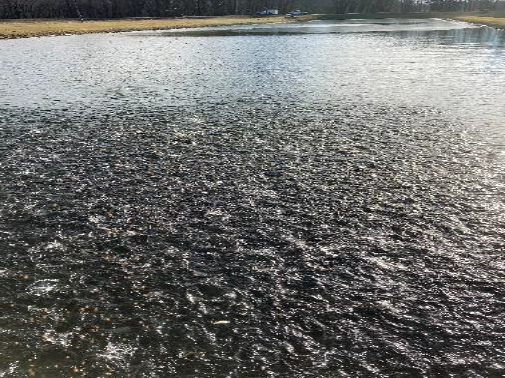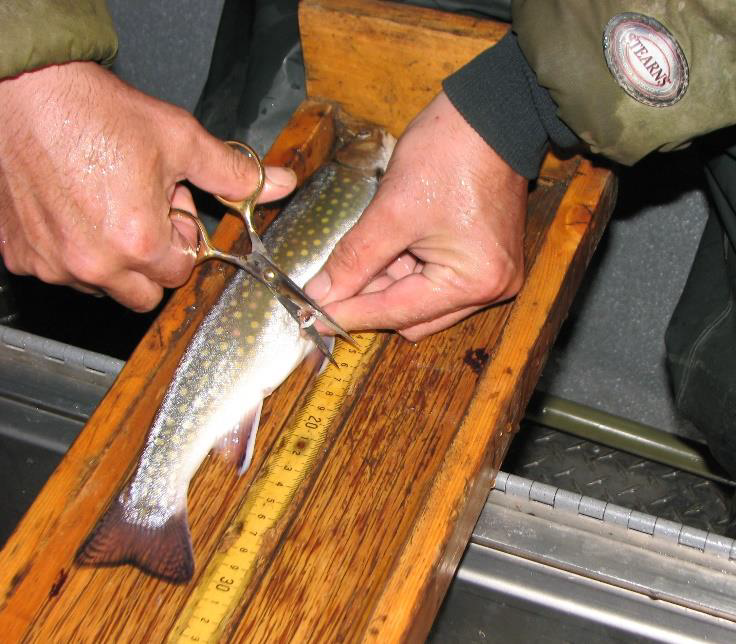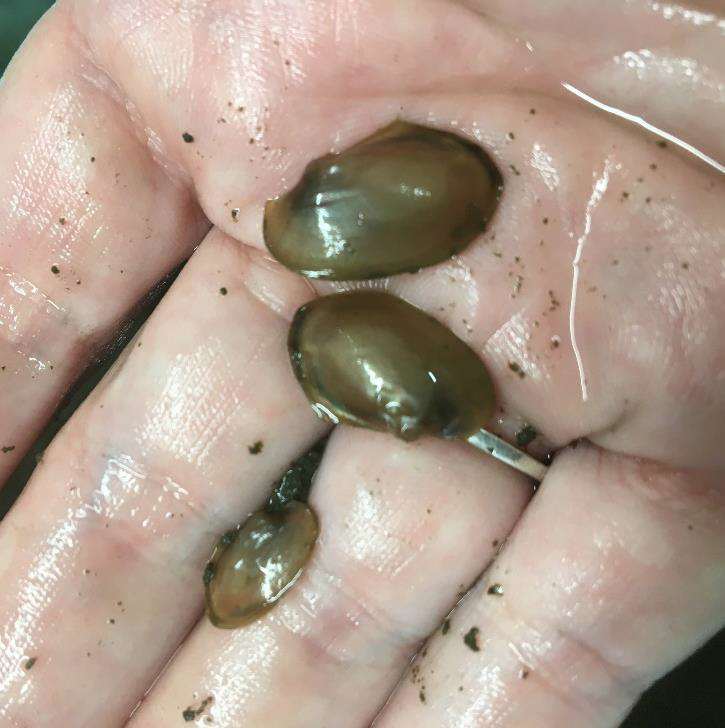As production season winds down, things start to slow down a bit at the hatchery. However, that doesn’t mean we don’t have fish on station. We hold on to several species for different reasons throughout the winter. We currently have four of our ponds set up to overwinter fish.
One of these ponds is dedicated to finish growing out the Rainbow Trout hatched last winter. These will be grown as much as possible until the end of April when they will be stocked out as catchable sized trout. Another pond is dedicated to keeping our “fishing day” fish, mainly Rainbow Trout with some fun surprises sprinkled in. There are some absolute monsters in there, partially due to the fishing day cancellations in 2020. The next fishing event will be epic, whenever that might be!
Another pond is dedicated to all the broodstock sportfish on station, including Yellow Perch, Bluegill, Largemouth Bass, Smallmouth Bass, and Black Crappie. They will be divided into their own ponds come spring. Finally, a pond is used by some of this years’ Walleye and Smallmouth Bass crops. These are destined to become host fish for the mussel program in 2021. More current and future mussel host fish can be found inside the buildings. Channel Catfish, Freshwater Drum, Walleye, Golden Shiner, and Flathead Catfish are all waiting their turn to carry around some baby mussels. Never a dull moment!
By: Nick Bloomfield

One of the broodstock ponds with the 20-21 season’s first dusting of snow. USFWS photo

Feeding the Rainbows- an automatic feeder distributes feed to hungry Rainbow Trout. USFWS photo.













